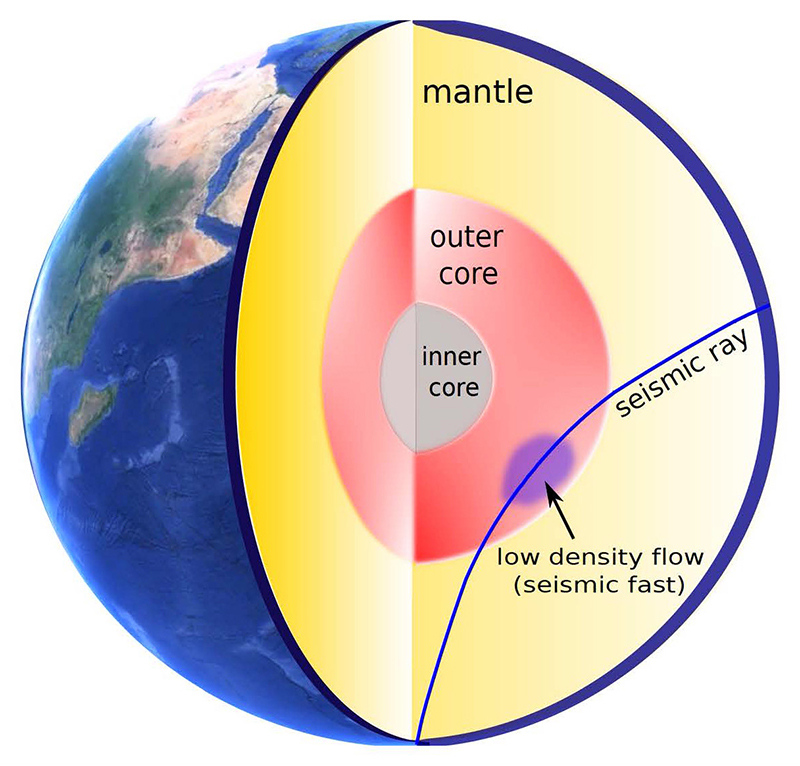There's a Change Happening to Earth's Outer Core, as Revealed by Seismic Wave Data. DAVID NIELD1 JULY 2022
image: credit goes to pixabay
 How seismic waves travel through the outer core. (Ying Zhou)
How seismic waves travel through the outer core. (Ying Zhou)
The convection happening in the fluid iron of Earth's inner layer as it crystalizes onto the inward center makes streaming electrical ebbs and flows, which controls the attractive field around us. Be that as it may, the connection between the inner layer and Earth's attractive field isn't completely perceived - a great deal of it depends on speculative demonstrating.
"On the off chance that you take a gander at the north geomagnetic pole, it's right now moving at a speed of around 50 kilometers [31 miles] each year," says Zhou. "It's getting away from Canada and toward Siberia. The attractive field isn't a similar consistently. It's evolving."
"Since it's transforming, we likewise hypothesize that convection in the inner layer is changing with time, however there's no immediate proof. We've never seen it."
This new review - and possibly future examinations like it - could give helpful experiences into precisely how the inner layer and its convection are evolving. While the progressions noted here aren't enormous, the more we know, the better.
For this situation, Zhou recommends that lighter components like hydrogen, carbon, and oxygen have been delivered in the inner layer beginning around 1997. It relates to a thickness decrease of around 2-3 percent and a convection stream speed of around 40 kilometers (25 miles) each hour, as indicated by the distributed paper.
There are right now 152 Global Seismographic Network stations all over the planet, checking seismic waves progressively. While we have zero control over the area or timing of seismic tremors, we can ensure that however much information as could be expected is logged about them.
"We're ready to see it currently," says Zhou. "Assuming we're ready to see it from seismic waves, from here on out, we could set up seismic stations and screen that stream."
The exploration has been distributed in Nature Communications Earth and Environment.







Comments
Post a Comment